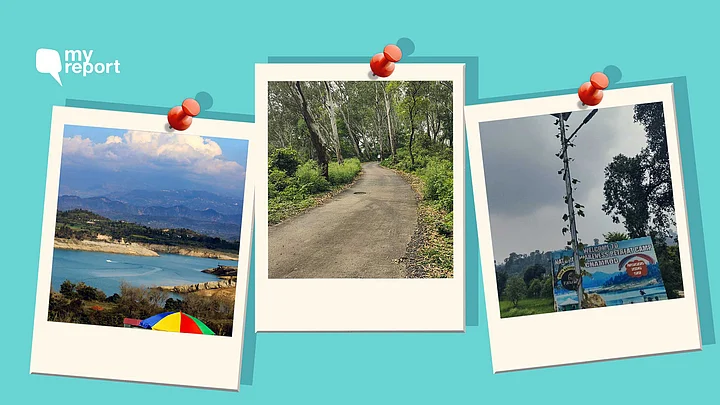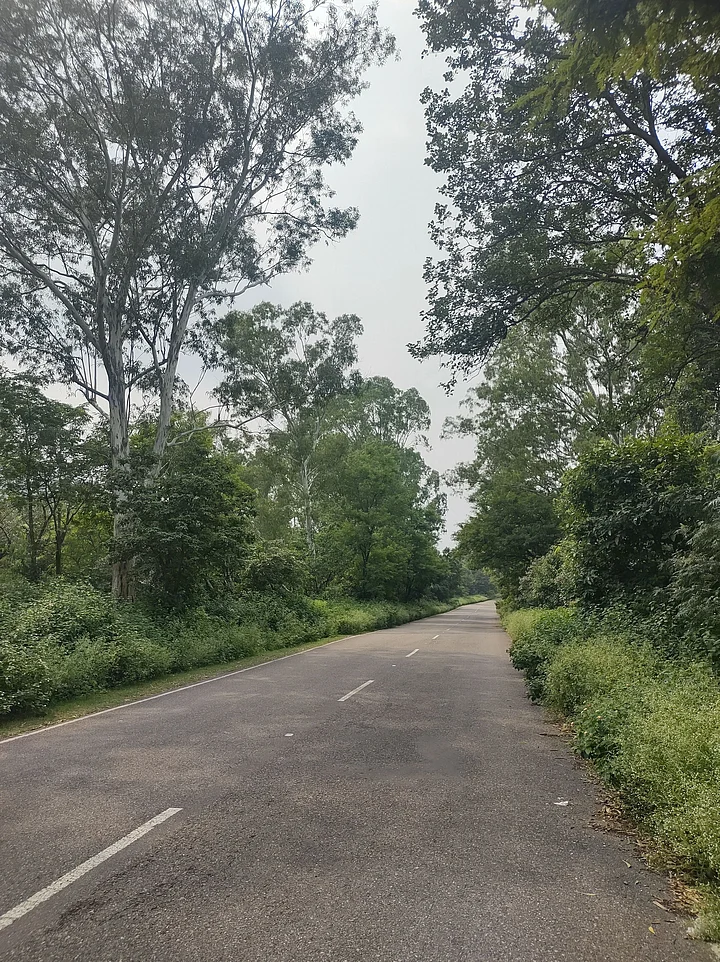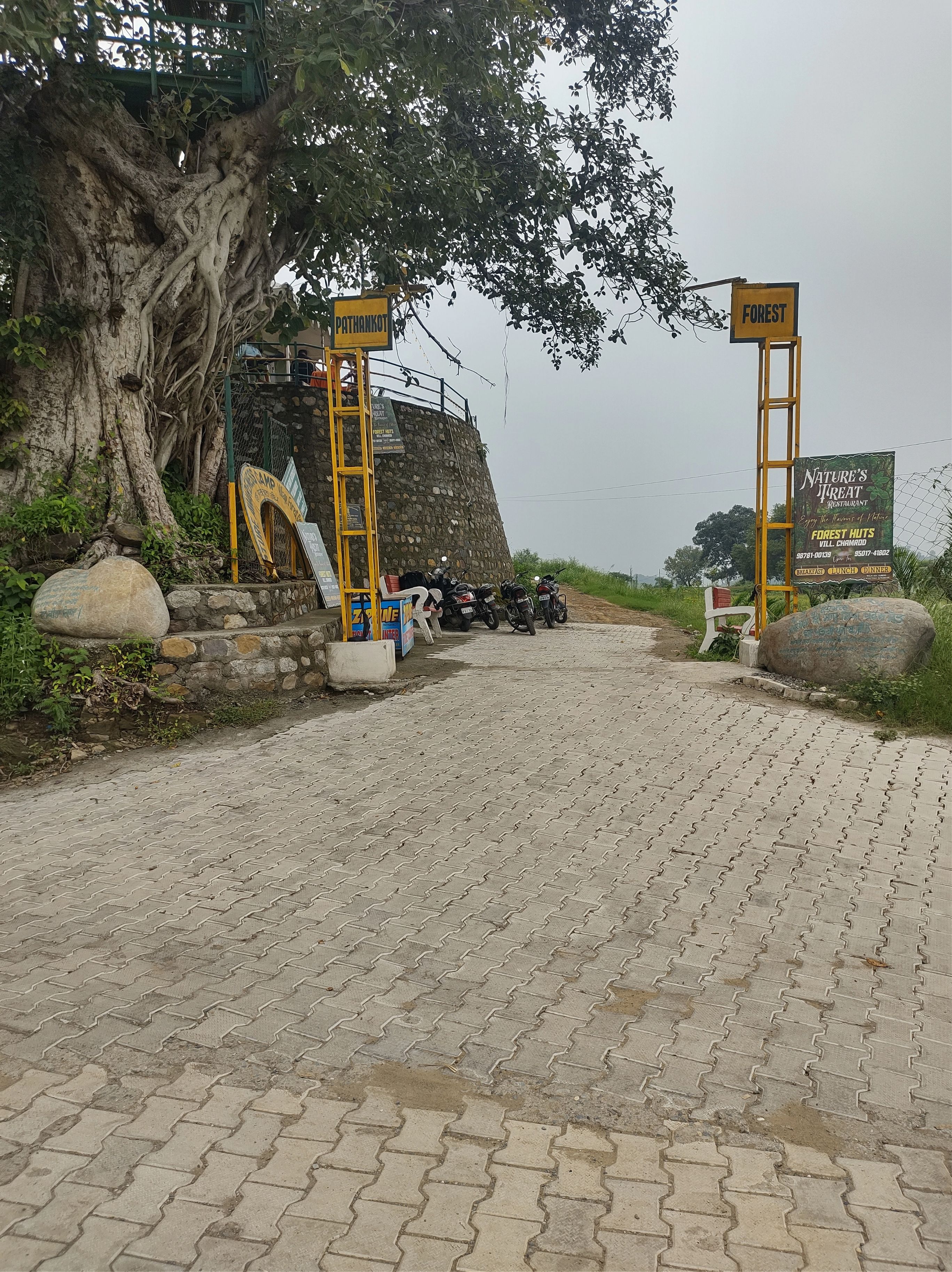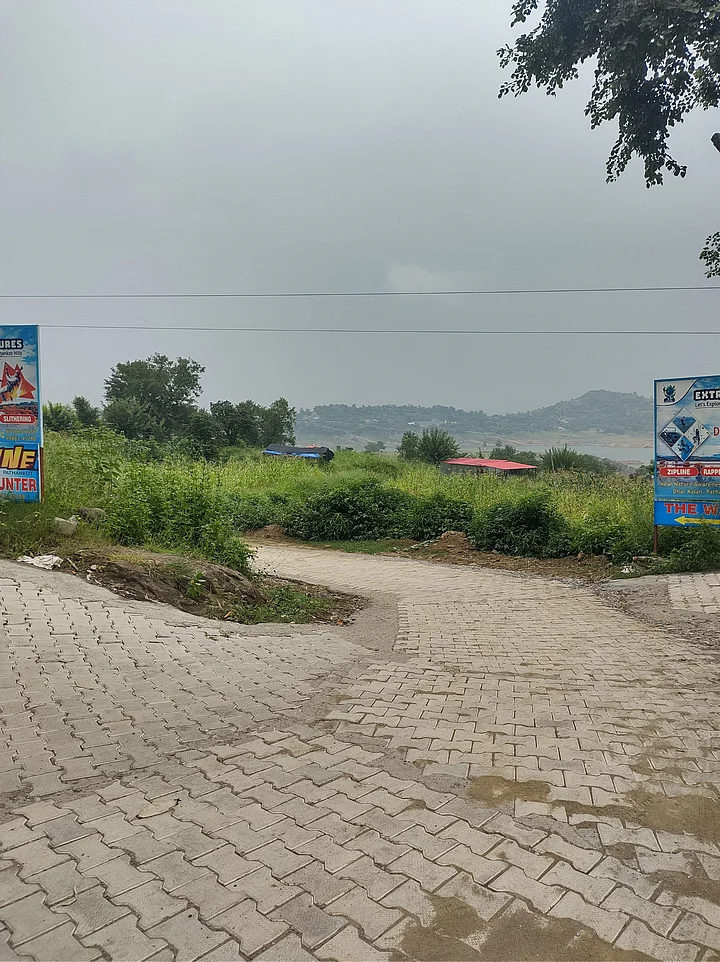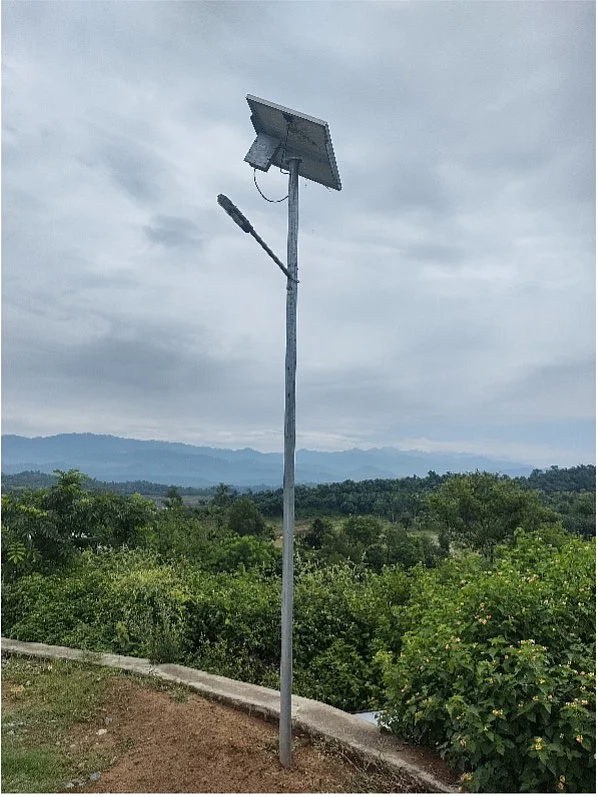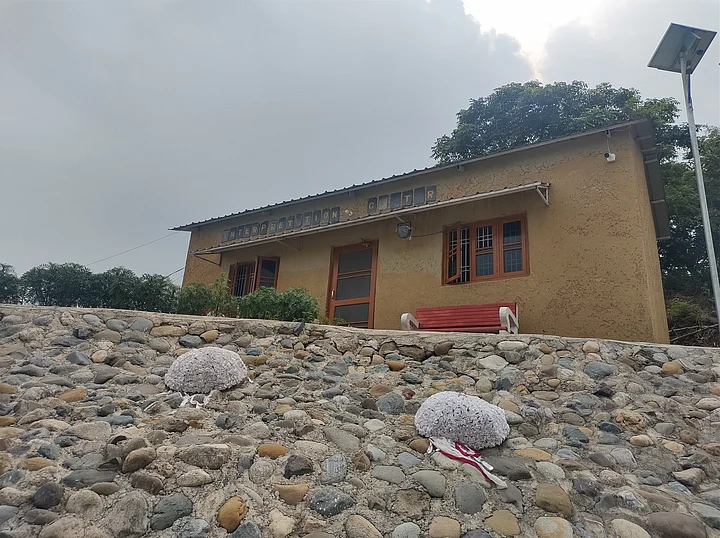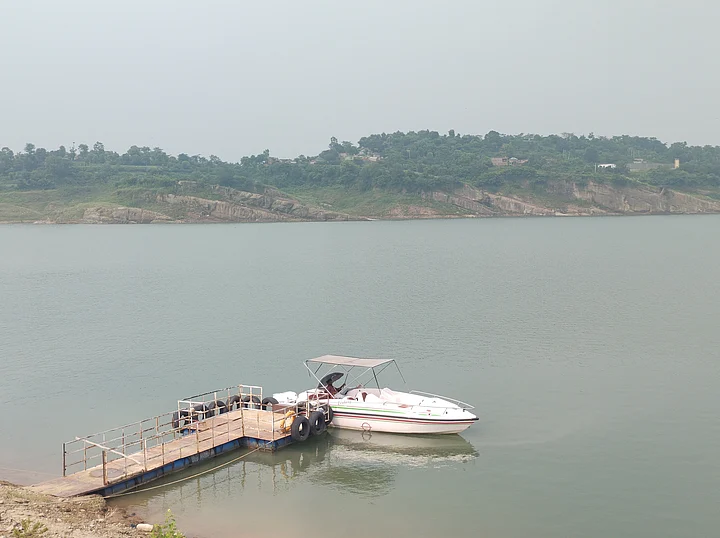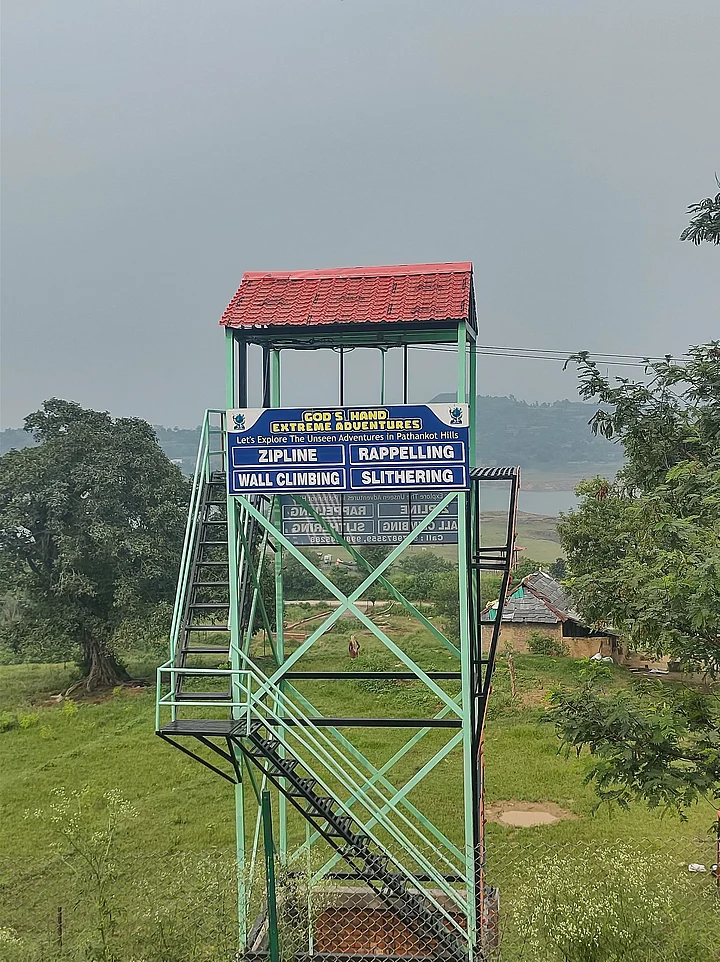Chamrod, a village in Pathankot district of the Punjab, offers stunning views of the Shivalik Range and the mighty Peer Panjal Range in its backdrop, while itself being surrounded with lush green pastures. The abundance of flora and fauna adds to the beauty of the region, considered one of the most backward in Punjab.
Given such a wonderful geography, this area always had an immense potential to be developed as a recreational spot for adventure sports and weekend getaways. With little opportunity in the region otherwise, tourism seemed to be a game changer. Hence, the village started to sustainably utilise what nature had to offer, and developed the region with the help of local administration. Coexistence with nature is deeply rooted in the village’s culture and behaviour.
In 2019, a village forest committee (VFC) was formed as a management and decision-making body that represented the whole community. Their aim was to prevent migration of local youth to metro cities by promoting entrepreneurship and innovation, employment generation, and local governance of nature and its resources.
The tourism development project was kick-started with the Dhar Nature Retreat, a small hotel with tent rooms.
This nine-member committee carried the essential tasks related to the management of the village as well as the hotel. They signed memoranda of understanding (MoUs) with the vendors (of street food and adventure activities), recruitment workers, etc, while monitoring activities and development works.
Focused efforts towards tourism have enabled the village to undergo a complete transformation that can be defined in terms of nature conservation, cleanliness, sanitation, clean drinking water, employment, better roads and connectivity, safety, and security. The village envisions to become a preferred tourist destination on the country’s tourism map, at par with the major hill stations of Dalhousie, Dharamshala, etc, located in the neighbouring state of Himachal Pradesh. In the month of August, around 3,173 tourist vehicles entered the village (majorly from Punjab, Himachal, and Jammu and Kashmir), as per the records provided by the VFC.
"The village is very proud of what it has achieved. We are also thankful to the administration and Forest Department for all the support provided. We will work even harder to mark the village on the tourism map."Ashok Kumar Lambardar, Vice Chairman, VFC
Support from Government
A project on such a big scale cannot be delivered by one committee alone. In the case of Chamrod, the village committee and a local administration were key stakeholders but various other departments and individuals were involved from time to time.
The Public Works Department and gram panchayat played a key role in infrastructure development, like construction of roads, provision of clean drinking water, portable toilets, etc.
- 01/07
Main road connecting Pathankot to Chamrod.
(Photo Courtesy: Siddharth Dhodapkar)

- 02/07
Road to village.
(Photo Courtesy: Siddharth Dhodapkar)

- 03/07
Roads inside the village.
(Photo Courtesy: Siddharth Dhodapkar)

- 04/07
Roads inside the village.
(Photo Courtesy: Siddharth Dhodapkar)

- 05/07
A road in the village.
(Photo Courtesy: Siddharth Dhodapkar)

- 06/07
Installation of solar streetlights in the village.
(Photo Courtesy: Siddharth Dhodapkar)

- 07/07
Installation of solar streetlights in the village.
(Photo Courtesy: Siddharth Dhodapkar)

A strong support was received from the police department in ensuring the safety and security of the tourists and in maintenance of law and order at the site.
What About Finances?
Operating such a huge project requires steady funds. The district administration, Forest Department, and local individuals mobilised financial resources to commence the project operations.
Huts at the resort were set up with the help of finances from the district administration and Forest Department. Existing government schemes were utilised for infrastructure development.
Further, the income and expenditure of the project is looked after by the committee. For example, income from the tourist huts, rent amount from the food stall owners/service providers, funds collected via parking fee, are the major sources of the revenue. Salaries of the employees, day-to-day office expenses, electricity and water bills are paid for with this income. After receiving initial financial support for the set-up, the project has now become self-sustaining.
Generating Employment
There are around 30 households in the village and most members are directly employed in various roles in this tourism-oriented village. Locals are employed for several roles – cooks, caretakers, watchmen, managers, parking operators, etc.
Earlier, the youth of the village would migrate to Amritsar or Chandigarh in search of a good job but now they can stay in their community and help it grow. A total of 23 MoUs/agreements have been signed with different individuals and agencies that employ more than 50 people. Services like adventure sports, parking, and street food are made available to the tourists via these.
Most importantly, the whole tourism project of Dhar Nature Retreat is laid on the foundation of environmental sustainability, co-existence and minimal interference with nature.
This can be seen by the infrastructure design and policies of the place, like use of non-concrete structures, ban on single-use plastic, efficient waste-management systems, no deforestation, and efficient traffic flow.
All this was done after acquiring requisite permissions from forest authorities and the pollution board. The furniture used is made from waste wooden pieces and bamboo. The 'Interpretation Centre' was built using wood and plastered using mud and rice husk. Use of portable toilets to prevent discharge of human waste into the environment, and provision of separate dustbins for dry and wet waste, are other such policies.
- 01/05
View from the huts.
(Photo Courtesy: Shammi Chaudhary via Siddharth Dhodapkar)
- 02/05
The 'Interpretation Centre'.
(Photo Courtesy: Siddharth Dhodapkar)

- 03/05
The 'Interpretation Centre'.
(Photo Courtesy: Siddharth Dhodapkar)

- 04/05
Adventure activities.
(Photo Courtesy: Siddharth Dhodapkar)

- 05/05
Adventure activities.
(Photo Courtesy: Siddharth Dhodapkar)

This demonstrates the huge tourism potential the region has. The success of this model is bringing in huge crowds. More villages are voluntarily coming forward and forming their own VFCs. One such example is of village Saarti, located in the same subdivision of Dhar Kalan.
While the village has achieved a lot in the last few years, much remains to be done. Regardless, in a time when rural population is migrating to cities, Chamrod has effectively demonstrated the potential a village has to transform itself by enabling the local population. Developing tourism can lead to the overall development of a village.
( All 'My Report' branded stories are submitted by citizen journalists to The Quint. Though The Quint inquires into the claims/allegations from all parties before publishing, the report and the views expressed above are the citizen journalist's own. The Quint neither endorses, nor is responsible for the same.)
